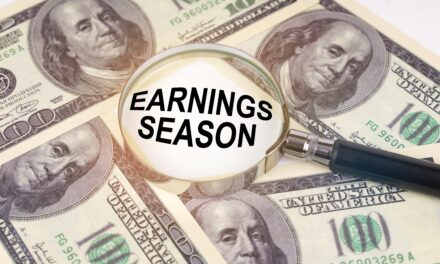We’ve officially reached the midway point of 2025 … and most investors would say it’s been “so far, so good.”
But next week, we’re going to see a major crash in payroll numbers as DOGE’s February cuts finally trickle through the system to show up in the bottom line.
And that’s going to be bad news just before the holiday weekend kicks off.
Watch the video below for the full story:
Video transcript:
Welcome to Moneyball Economics, I’m Andrew Zatlin.
You may have noticed a slight difference in my appearance, and that’s because next week, my son starts West Point. They’re going to be giving him a major buzz cut and in a gesture of solidarity, I let him shave me as well.
And speaking about shocks to the system, let’s talk next Thursday. I think we’re going to have a shock to the markets. I think they’re going to get rattled because that is when payrolls come out. Now, right now, consensus is expecting, yeah, a slight softness.
I’m telling you it’s going to be blood on the waters. We’re going to see a terrible number.
Now, the reason I see something different from consensus is because of methodology. I’m the number one forecaster for payrolls on Bloomberg because of my methodology and data consensus methodology, however, is a little bit loose…
What they do is they look at the last couple of months and extrapolate from there. It’s not a bottoms up process. They simply say, “well, it’s been hanging around 140,000.” We then look at a couple things, what might be going on. Maybe there’s been some major layoff announcements, whatever. “Hey, we’ll take that number and shave off, say 25 grand because we know we’re on a downturn, okay?”
And so they’re out there running around with a number that’s around 120,000 was 140,000 last month. A little bit softness, 120? No way. We’re not even going to get maybe half of that.
And if I’m right, if we see this really severe drop, it’s a question of is bad news going to be good news? Because when we’re in this rate cutting environment and we see softness in the broader economy, it puts pressure on the Fed to cut rates sooner and maybe deeper.
However, this bad news/good news thing is going to get tested because it’s going to be such a surprise, such a downturn, and the Fed is already saying they’re not really in a place where they want to cut rates, and suddenly there’s going to be this big shocking downturn. It is obviously going to be a surprise beyond what the markets are thinking.
And on top of that, it comes out right before July 4th weekend, when a lot of butts aren’t going to be in the seats. That means we’re not going to have a lot of people out there calming the waters. So Thursday might be a day where the markets go down. To play that, maybe just buy some SPY puts or something.
I’m not that guy to tell you, but just expect a little bit of little shock to the system on Thursday, like I said, especially because we’ve had this huge run-up.
Maybe some folks think now is the time to take some money off the table.
In any case, let me tell you why I think we’re going to see a bad number. And it comes to some basics. Companies hire because they need X number of people to produce a certain service or a certain product. If you’re making cars and you need to produce more units of cars, you’re going to hire more people. If you’re a restaurant, you have more foot traffic, you got to hire more people to support that foot traffic.
Well, that’s exactly not where we are. If anything, we are seeing falling foot traffic.
For example, I know I’ve shared this, let me repeat it. The number of people out there flying on planes in America has dropped 1 million in just one month. Take that. Let’s just run with that number. The average cost of a plane ticket’s 400 bucks…
So right off the bat, airlines are not seeing $400 million and these people are going somewhere. So that’s hotels that won’t be stayed in. That’s food, restaurant, dining, drinking, that’s not going to happen. Entertainment, we’re talking about a billion to $2 billion in one month. The month of June, that’s not being spent.
So if you’re a restaurant, you’re not necessarily going to fire people, but you’re not necessarily going to hire more people because you got a couple tables open.
You don’t need another busser or you don’t need another waiter. This matters because in the month of June, the drivers for payroll growth, the seasonal hiring really comes down to two or three sectors. Leisure and hospitality, hotels going out, drinking and dining, and retail drive almost 60% of all the hiring in the month of June.
Now at construction, you are talking about most of the hiring that takes place every year in June.
And guess what? All three categories are looking bad. I just mentioned, for example, the number of travelers is down. Well, guess what? Hotel occupancy is down 1%. That means the number of rooms being filled by people down 1% versus the same period last year.
What does that mean? Well, if I’m seeing the same number of people coming in and staying in my hotel as they were last year, odds are I’m going to staff up to the same levels as last year. Well, guess what they are. And then some. Same with restaurants, same with entertainment.
So basically all these sectors that depend on foot traffic are not getting the foot traffic that really drives a lot of extra hiring. And then you look at construction, oh my God, housing sales down precipitously. The number of permits to build down precipitously. In other words, if you’re in the construction business, you’re going to hire to build because there’s still demand out there, but it’s not really pushing the envelopes, you’re not going to hire that many more people. Definitely not more than you hired last year.
And by the way, the supply of workers might be getting a hit because ICE is chasing after a lot of these construction workers.
Needless to say, when I look at my methodology is a bottoms up approach. And when I look at each of these specific sectors, I don’t see strength. I see weakness. And then there’s a final factor that, well, today, folks, the jobless claims came out and supports 100% of what I’ve been warning about.
And that is we have fired somewhere around 250,000 to 300,000 people year to date. I’m talking about the IT sector, which is announced almost 70,000 layoffs. I’m talking about DOGE, I’m talking about all these layoffs.
Well, guess what? While we’ve seen 250,000 to 300,000 people being laid off, if you looked at jobless claims, may, they weren’t showing up. Jobless claims people saying, I don’t have a job.
Steady as you go until we get to May. And then all of a sudden the number of people saying, Hey, I don’t have a job, moved up. And it moved up pretty precipitously. In fact, starting in May and going through the third week of June, we have nearly a hundred to 120,000 people who raised their hands and said, I don’t have a job. That’s a huge number in a short time span.
So what’s happening, what’s happening is this is confirmation of what I warned about months ago, which is the severance package phenomenon. When you get laid off and you’re a white collar worker, oftentimes you’re going to get a severance package of two to three months. That means you’re being paid upfront for a couple months of salary. Well, from the government’s perspective, that means you’re still on the books, and if you’re still on the books, that means payrolls will include you, but it also means you can’t file for jobless claims.
Start the clock. Clock started in February when these layoffs were being announced and things started to move over. Move forward February, March, April. If we’re talking about 90 day severance packages that started to kick in February, guess what? They ran out in May.
And that’s why we’re starting to see this sudden surge in people saying, I don’t have a job. They finally were eligible. Just because you are a white collar worker doesn’t mean you’re not going to file for free money, right? 1,000 or 2,000 bucks a week is material. If you’re in California and you are an IT programmer and you don’t have a job, take that money right all day every day. Well, now you’re eligible.
And that’s why we see this flood. There’s a second data point that came out in the job as claims that confirms my severance package issue, and that is the number of people who have been out of work for two or more weeks. We call that the continuing claims, and it’s rocketed up in just four weeks.
It’s up 75,000, so that means 75,000 more people in June raise their hands and said, I haven’t been able to get a job in just the past two weeks. If the severance package phenomenon is correct, meaning we have a wave of layoffs that for a certain period of time aren’t included in the data, but then suddenly those severance packages end and now they’re included. We would expect a wave of them saying, I don’t have a job. And if they are these workers like IT workers who can’t get a job, they’re going to fall into that continuing claims bucket. And that’s what we’re seeing now.
That’s the jobless claims world, and they’re not necessarily one-to-one with payrolls, but they’re adjacent. And so when we see 75,000 people suddenly saying, I don’t have a job, some amount of that is going to leak into payrolls 75,000.
Even if we talk 20% of that, that’s 15,000 people of a headwind going into the June payroll, and I think it’s going to be a lot more than that.
So put it all together. I am predicting a terrible number for next Thursday. It represents an inflection down for various reasons, some of which I’ve touched on today.
The question to you is; what are you going to do to prepare in advance? Because quite frankly, a number as low as I’m predicting is very different from consensus. And I am the number one person on Bloomberg when it comes to forecasting payrolls, and that’s again, because I get it more often than not on these inflection points. So I really want you to win this one to great opportunity.
Me? I’m going to be defensive. I think the market’s shot up a lot recently. I think this bad news will be treated as bad news, and therefore the markets are going to probably shake on Thursday. That’s what I’m going to prepare for. I want you to win it because we are in it to win it.
Zatlin out.

Andrew Zatlin
Editor, Moneyball Economics





